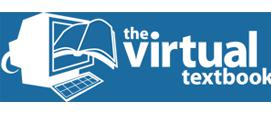Place Value
Students are required to be secure in the notion of place value in order to deal confidently with decimals, ordering numbers and comparing numbers. This resource package contains a variety of resources to support the teaching and learning of using place value, including decimals, measures and for any size of integers, the language of larger and smaller numbers, and ordering numbers, including the correct use of =, ≠, <, >, ≤, ≥.
Visit the secondary mathematics webpage to access all lists.
Place Value and Number Systems
This resource contains ideal starter activities designed to engage students, make them think about mathematics and discuss their answers.
Pack One contains Largest and Smallest which requires students to choose three digits and make the largest and the smallest numbers they can. The task is repeated with four digits. Students should be encouraged to discuss what strategies they used to make the numbers, why they placed certain digits in certain places and to attempt to generalise their strategy for making numbers with a larger number of digits.
Putting in Order requires students to write numbers in order of size. Students should be asked to explain how they completed the task and what strategies they used. Ask students to write an algorithm or a flowchart to explain the process of ordering the numbers.
Appropriate activities in pack two include Roman numerals, Bengali numbers, Urdu multiples and a Chinese number puzzle. Students could be asked to explain the differences between the Roman system and the system we use. What are the advantages and disadvantages of each system? The Chinese number puzzle is to be cut up to make a jigsaw puzzle for students to reconstruct. Students need to understand how the numbers are constructed in order to say how the number 63 is written.
Pack three includes activities: Hindi additions, Panjabi numbers, Cuneiform numbers, Binary fractions, and Working in different number bases. A great way to discover whether students understand place value is to work in different number bases. This task can be used to identify misconceptions.
Arithmetic: Place Value
The text book Arithmetic: Place value contains explanations and exercises covering place value in whole numbers and decimals.
The activitiy Place Value uses number cards to make the smallest and largest numbers. Place value with Decimals is essentially the same activity, but one of the cards contains a decimal point. Ordering decimals presents students with cards showing decimals which are to be placed into numerical order.
Interactive Teaching Programs 4
Number spinners generates random numbers using ‘spinners’ with three, four, five or six sides and can be used to generate the digits for the activities in the first two resources in this list.
Ordering numbers shows how a number line can be developed from a row of 10, 20 or 100 counters. It behaves like a short film. This resource is useful to gain a pictorial representation of numbers for any student finding previous tasks challenging.
Place value displays on-screen place value cards to construct and partition three-digit whole numbers.
Teaching Mental Mathematics From Level Five: Number
This booklet contains an activity in which students explore the effects of multiplying and dividing numbers by powers of 10. Students need to understand, and be able to explain, the effect of multiplying and dividing by numbers between 0 and 1.
Place Value Games for Students Aged 11-13
These games provide opportunities for students to apply their knowledge of place value, rounding and ordering and could form a plenary activity.
One or less - involves students choosing numbers including decimals and dividing them to try to make a number close to one or two after rounding.
Round to a whole - students score by making a number with two decimal places, from digits generated by cards, and rounding to the nearest whole number.
10, 100, 1000
This interactive excel file from the Virtual Textbook deals with place value and with multiplication and division by 10, 100 and 1000. Students can:
- covert numbers into words and vise-versa
- multiply or divide by 10, 100 or 1000
- rounding to the nearest 10, 100 or 1000
- change values from pence to pounds and mass from grams to kilograms
- round decimals to one or two decimal places.
There are a further eight sheets of questions on these and similar topics which may be duplicated for classroom use.





